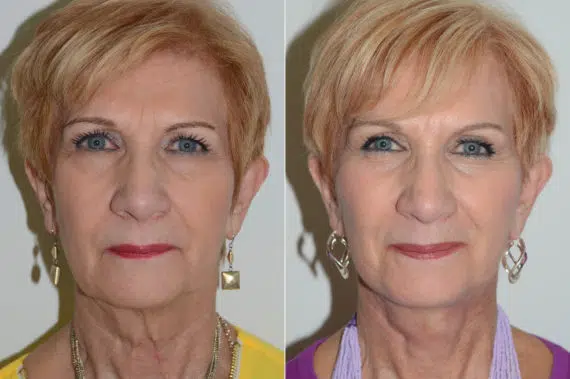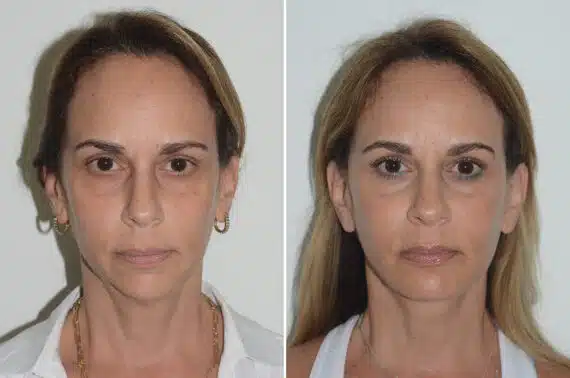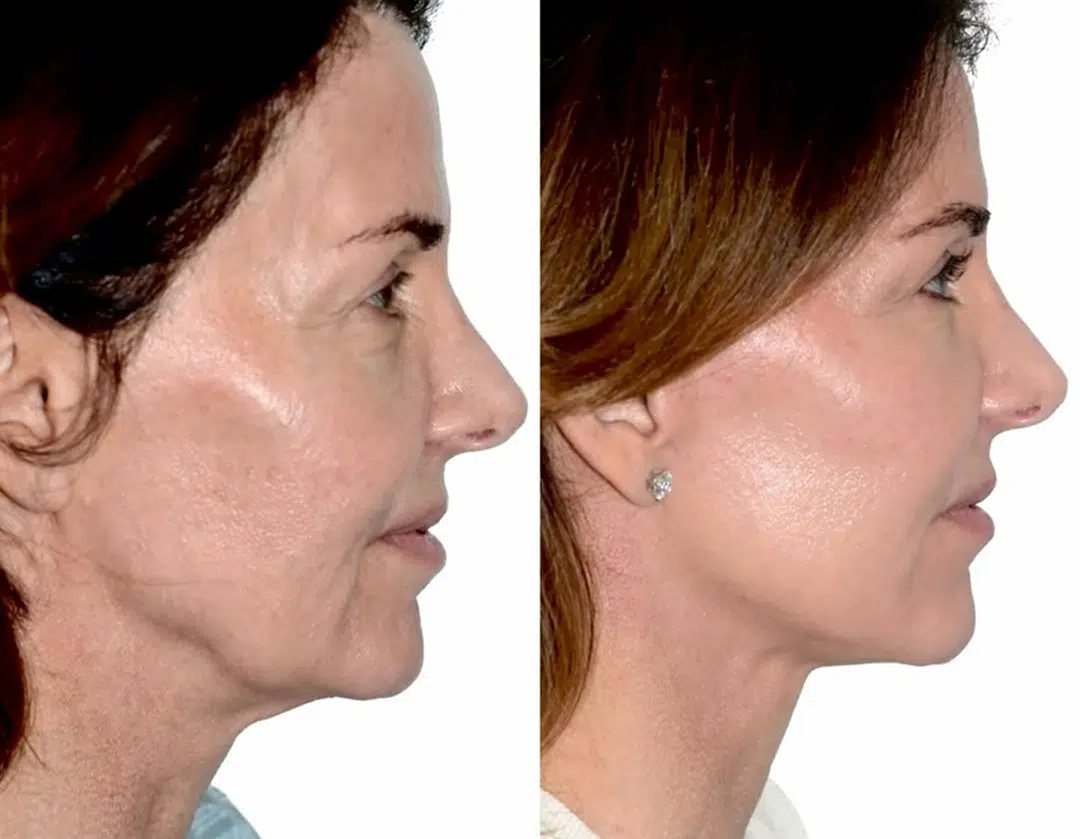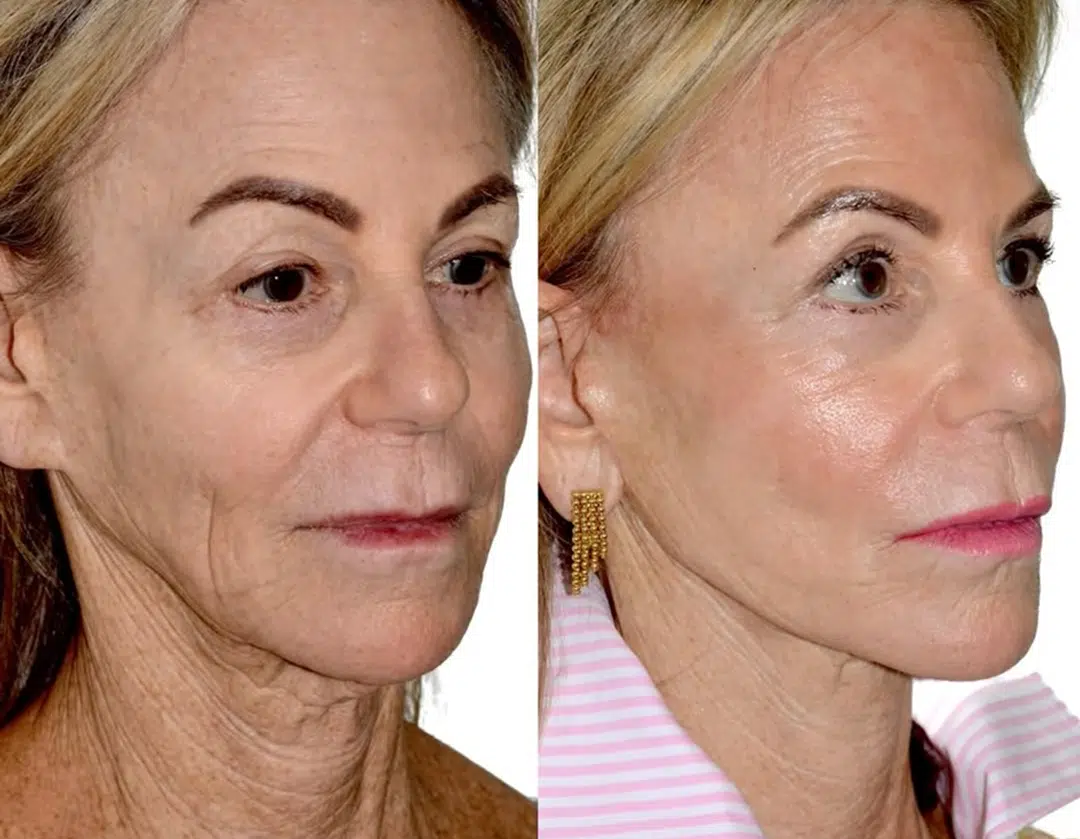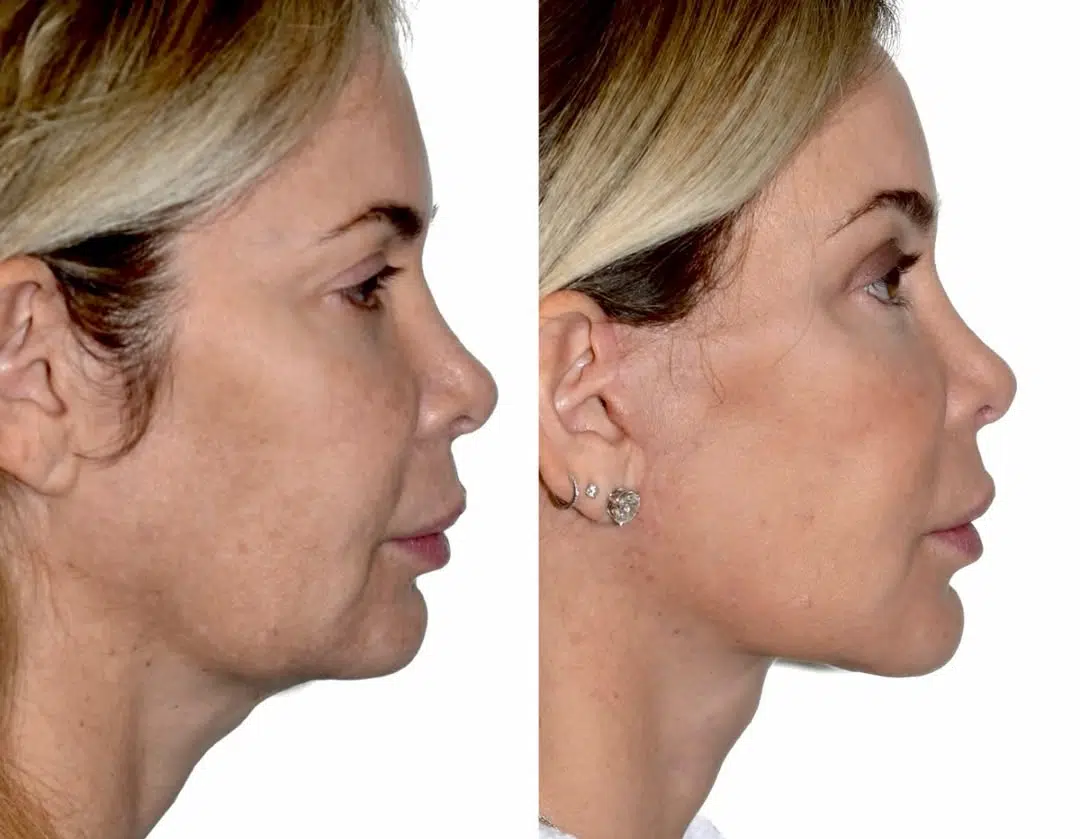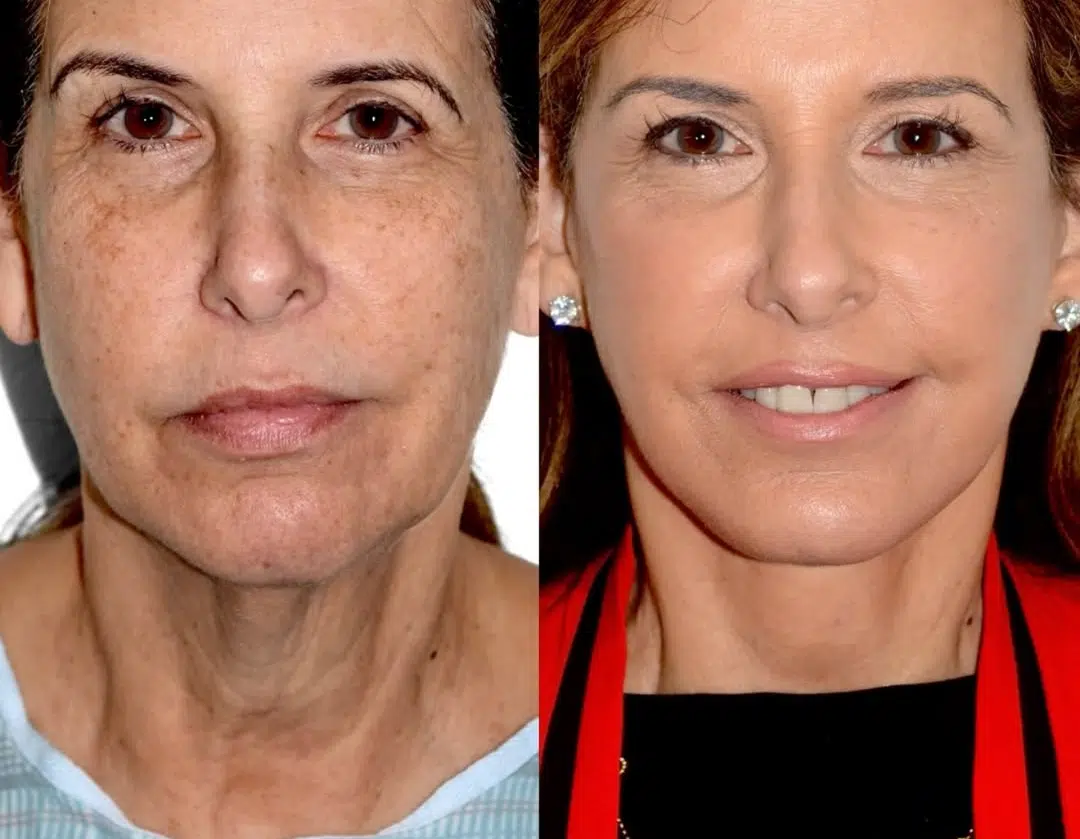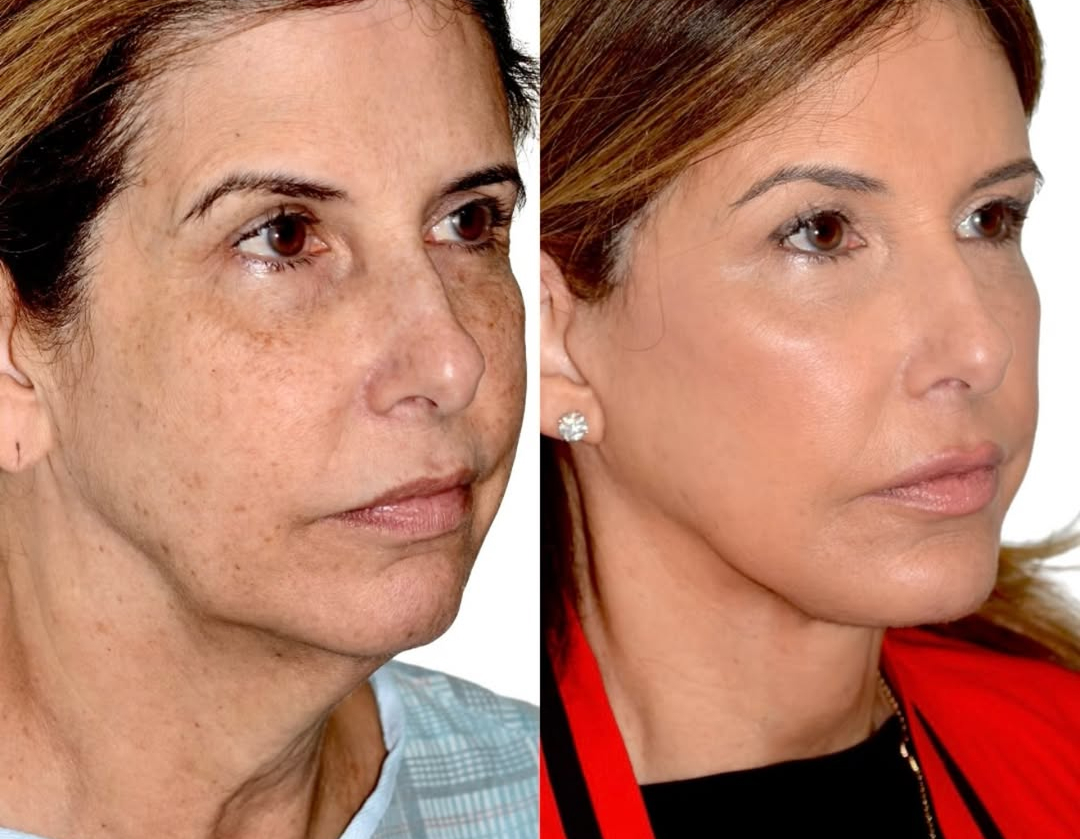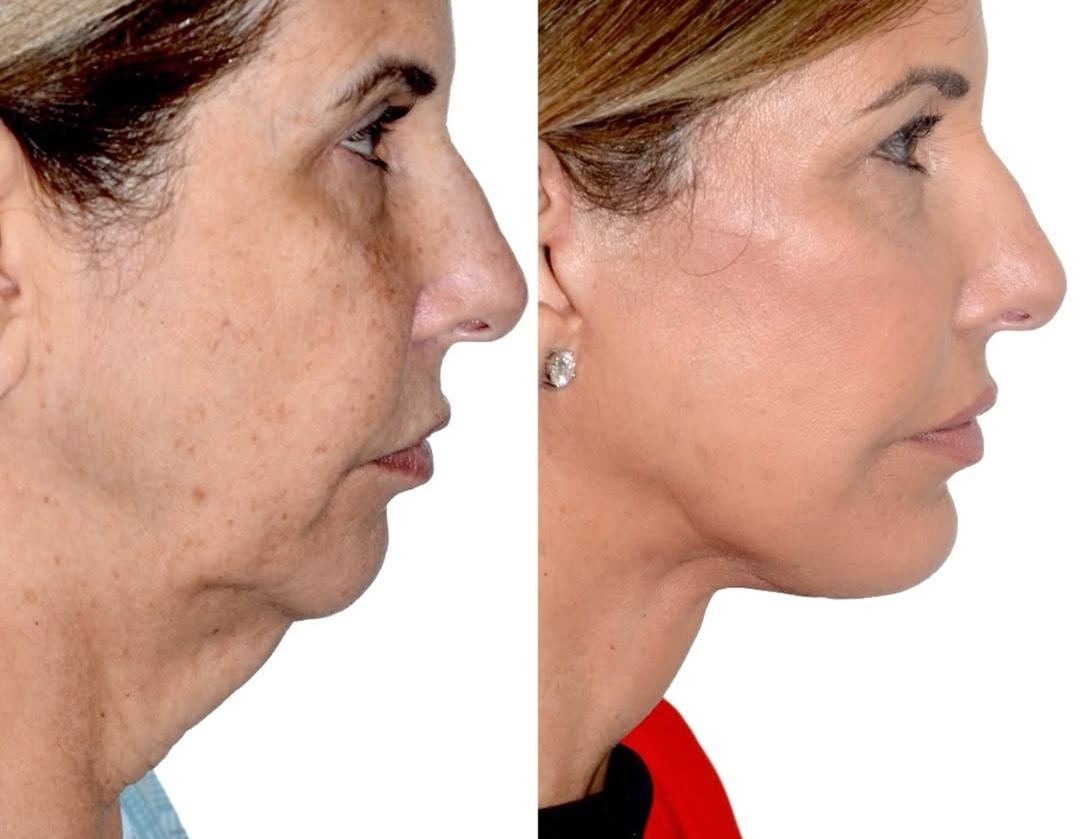Deep Plane Facelift Surgery Benefits
A Deep Plane Facelift offers a comprehensive solution to visible facial aging. Unlike more superficial facelift techniques that primarily tighten the skin, the deep plane approach addresses the deeper muscular and connective tissue layers (SMAS and retaining ligaments), creating a more harmonious and durable rejuvenation. By correcting the underlying causes of sagging, a deep plane facelift restores youthful facial structure while preserving natural expression.
Deep Plane Facelift
Before and After Photos
Each patient is unique and individual results may vary*.
What is a Deep Plane Facelift?
A facelift (rhytidectomy) is a surgical procedure designed to reduce visible signs of aging in the face and neck. A deep plane facelift is a specific, advanced type of facelift that works beneath the Superficial Musculoaponeurotic System (SMAS)—a layer of muscle and connective tissue that helps support the face.
During a deep plane facelift, this SMAS layer and the attached deeper tissues are carefully released and repositioned as a single unit. By working under the SMAS and releasing the retaining ligaments that tether the tissues down, the surgeon can:
ACTUAL DEEP PLANE FACELIFT PATIENT
Non-surgical treatments, such as dermal fillers or Botox (“liquid facelift”), can temporarily soften lines and restore some volume. However, they cannot effectively treat true skin laxity, heavy jowls, or significant neck sagging. These injectables must also be repeated regularly to maintain results.
Surgical facelift options include mini facelifts, traditional SMAS facelifts, and deep plane facelifts. Mini facelifts can be helpful for early jowling and mild neck laxity but often do not provide the comprehensive, long-lasting improvement many patients seek. As a result, patients who start with a smaller procedure frequently return later for a full deep plane or more advanced facelift.

Patient Testimonials
Real Stories, Real Results

Deep Plane Facelift vs. Other Facelift Techniques
Because many patients research several options before choosing surgery, it’s helpful to understand how the deep plane facelift compares with other facelift techniques.
Dr. Bustillo’s Signature Deep Plane Facelift
Dr. Andres Bustillo has been performing deep plane facelifts for over fifteen years and devotes a large part of his facial rejuvenation practice to this advanced technique. His deep plane facelift rejuvenates the entire face, including:
“Deep plane” refers to the level of tissue at which he works—beneath the superficial muscle system. During the procedure, Dr. Bustillo releases key facial retaining ligaments and elevates the fatty midface layer and muscle layer as a unit. This allows the cheek to be lifted back to its natural position, the jowls to be elevated and softened, and the neck muscles (platysma) to be tightened for a well-defined neck.
Deep plane facelifts can be combined with other facial procedures for more complete rejuvenation, such as:
The Deep Plane Facelift Procedure
During a deep plane facelift in Miami, Dr. Bustillo carefully designs incisions to blend with natural facial contours and hairlines. Small, curved incisions typically begin in the hair at the temple, continue in front of and around the ear, and extend into the hairline behind the ear.
Through these incisions, he:
By repositioning the deeper structures rather than pulling on the skin, the deep plane facelift creates a midface lift, lower facelift, and neck lift in one procedure.
This approach allows for:
Depending on the patient, the procedure can be performed under general anesthesia or IV sedation. All surgeries are attended by board-certified anesthesiologists from the Baptist Hospital Anesthesiology Department, prioritizing safety and comfort.
Dr. Bustillo performs deep plane facelift surgery on an outpatient basis in his Miami-based AAAASF-certified surgical facility. Surgery generally takes about three to four hours, after which patients return home the same day with a friend or family member.
Questions about your procedure?
Schedule a consultation with Dr. Andres Bustillo.
Deep Plane Facelift Results & Longevity
Most patients notice a meaningful improvement in their facial contour and neck profile within the first few weeks after surgery, once the initial swelling begins to subside. Typical timeline:
Because the deep plane facelift addresses deeper structures and releases the retaining ligaments, results are generally more durable than surface-level techniques. While no facelift can stop the natural aging process, many patients enjoy the benefits of their deep plane facelift for ten years or more, aging from a more youthful starting point.

Deep Plane Facelift Cost in Miami
The cost of a deep plane facelift in Miami can vary depending on:
Deep plane facelift is the most advanced and technically demanding facelift technique Dr. Bustillo offers, and it typically represents a higher investment than a mini facelift or limited-scope procedure. Your fee may include:
A personalized quote is provided after a thorough in-office consultation and exam. Many patients view deep plane facelift as a long-term investment in their appearance, often replacing the need for multiple smaller procedures over time.
Risks and Safety
As with any surgery, a deep plane facelift carries potential risks, although serious complications are uncommon in healthy patients under expert care. Possible risks include:
Dr. Bustillo minimizes these risks by:
During your consultation, potential risks and how they apply to your individual situation will be discussed in detail so you can make an informed decision.
Who Is a Good Candidate for a Deep Plane Facelift?
A deep plane facelift is best for patients who have moved beyond what fillers, skin treatments, or mini facelifts can reasonably correct. Ideal candidates typically have:
While many deep plane facelift patients are in their 40s to 70s, chronological age matters less than overall health and the degree of structural aging. Healthy, medically cleared patients in their 70s or 80s can also be excellent candidates.

Am I Too Old for a Deep Plane Facelift?
There is no strict upper age limit for a deep plane facelift. While many patients are between their 40s and 60s, healthy individuals in their 70s or even 80s can benefit if they are medically cleared and have appropriate expectations.
A facelift cannot stop aging altogether, but it can significantly reset the facial clock. Many patients report lasting satisfaction with their results ten or more years after surgery.

Deep Plane Facelift Recovery
Because a deep plane facelift works in the deeper layers, early swelling can be a little more pronounced in the cheeks and midface than with smaller procedures. This is normal and gradually settles over the first few weeks.
Most patients describe a feeling of tightness rather than pain, especially in the neck and along the jawline. This sensation softens as the tissues relax into their new position.
The final results of a deep plane facelift may take several months to fully mature. Most patients are extremely satisfied with their rejuvenated, natural appearance.
Deep Plane Facelift Preparation: The Ideal Timing
ACTUAL DEEP PLANE FACELIFT PATIENT
Deep plane facelift is a more advanced procedure, so careful preparation is essential for safety and smooth recovery. Like all facelift patients, deep plane facelift candidates must complete pre-operative labs and obtain medical clearance from their primary care physician. In general, patients will:
You’ll receive a detailed, written pre-operative plan tailored to your medical history.
Following both pre- and post-operative instructions closely is essential to reduce the risk of complications and achieve the best possible outcome.
Deep Plane Facelift with Dr. Bustillo
During a deep plane facelift consultation, Dr. Bustillo’s goal is not simply to confirm that you “need surgery,” but to determine whether a deep plane facelift is truly the right level of correction for you. He will:
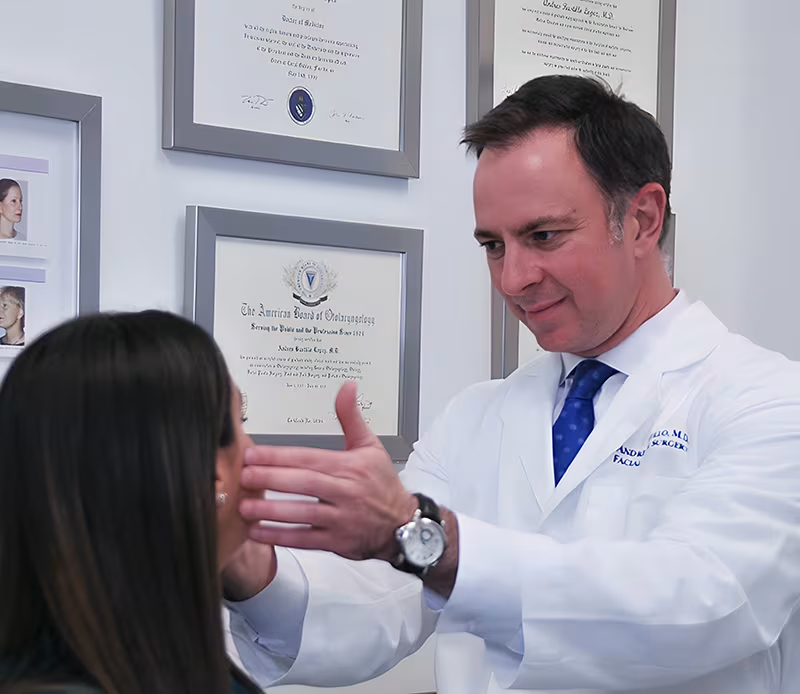
If a deep plane facelift is recommended, he will explain why that technique is preferred over more limited options in your specific case.
Dr. Bustillo will explain the potential results of deep plane facelift surgery, outline the recommended surgical plan, and review expected recovery and risks. You will have ample time to ask questions and feel confident that your plan is tailored to your anatomy and goals.
For more than fifteen years, Dr. Bustillo has performed deep plane facelift surgery in his AAAASF-certified surgical facility in Miami, Florida. Patients travel from throughout South Florida and beyond for his natural-looking, long-lasting results.

Why Choose plastic surgeon Dr. Bustillo?
Dr. Andres Bustillo is widely recognized as a facial aesthetics authority in Miami. He is a double board-certified facial plastic surgeon with over 20 years in practice, focusing exclusively on the face, head, and neck. His reputation for natural results and meticulous technique has led many patients to choose him for both surgical and non-surgical facial rejuvenation. Credentials include:
- Castle Connolly Top Doctor for more than 10 years
- Diplomate, American Board of Facial Plastic and Reconstructive Surgery
- Diplomate, American Board of Otolaryngology-Head and Neck Surgery
- Facial Plastic & Reconstructive Surgery Fellowship at The New York University
- Otolaryngology – Head & Neck Surgery Residency at The University of Miami, Jackson Memorial Hospital
- General Surgery Internship at The University of Miami, Jackson Memorial Hospital
Deep Plane Facelift FAQs
A deep plane facelift is one of the most comprehensive facelift techniques available today. Rather than relying on pulling or removing excess skin alone, the deep plane approach works beneath the SMAS (the superficial muscular aponeurotic system) to elevate the deeper muscles, fat, and ligaments of the face. By repositioning these structures, the entire face can be lifted in a natural way, improving the cheeks, jawline, and neck with longer-lasting support.
The cost of a deep plane facelift in Miami varies based on the extent of correction needed, whether additional procedures (such as eyelid surgery or fat transfer) are performed, and the time required in the operating room. After your in-person consultation and examination, you will receive a personalized quote that includes surgeon’s fee, facility fee, and anesthesia.
Most patients experience the majority of swelling and bruising in the first one to two weeks. Many feel comfortable returning to light work and social activities around two weeks after surgery. Strenuous exercise and heavy lifting are typically resumed around three weeks post-op. Final results continue to refine over several months as the tissues fully settle.
Because a deep plane facelift addresses deeper facial structures and releases retaining ligaments, the results tend to last longer than more superficial techniques. While individual experiences vary, many patients enjoy the benefits of their rejuvenated appearance for ten years or more, while continuing to age naturally.
During a deep plane facelift, Dr. Bustillo lifts and repositions the muscles, fat, and ligaments beneath the SMAS layer. The cheek fat (malar fat pad) is elevated back to its youthful position, the jowls are softened, and the platysma muscle in the neck is tightened. By releasing the retaining ligaments that tether these tissues, the deep plane facelift can more effectively elevate the midface and create a well-defined neck than more limited SMAS techniques.
Traditional SMAS facelifts typically tighten or fold the SMAS without fully releasing all of the facial retaining ligaments. An extended deep plane facelift goes a step further by releasing these ligaments and lifting the midface and lower face as a unit. This can result in more powerful elevation of the cheeks, better improvement of nasolabial folds and jowls, and a more natural, less “pulled” appearance.
All surgical procedures leave scars, but one of Dr. Bustillo’s goals is to make them as discreet as possible. Incisions are strategically placed along natural creases around the ear and within the hairline. Over time, these scars typically soften and fade, becoming difficult to detect in most social situations. Proper scar care and sun protection after surgery further support good healing.
If you live near Miami, Dr. Andres Bustillo offers Deep Plane Facelift among its services and is conveniently located at 6705 Red Rd #602, Miami, FL 33143.
Written and reviewed by Andres Bustillo, MD, FACS
Double Board-Certified Facial Plastic Surgeon in Miami, FL
Facial Plastic Surgeon in Miami, FL

